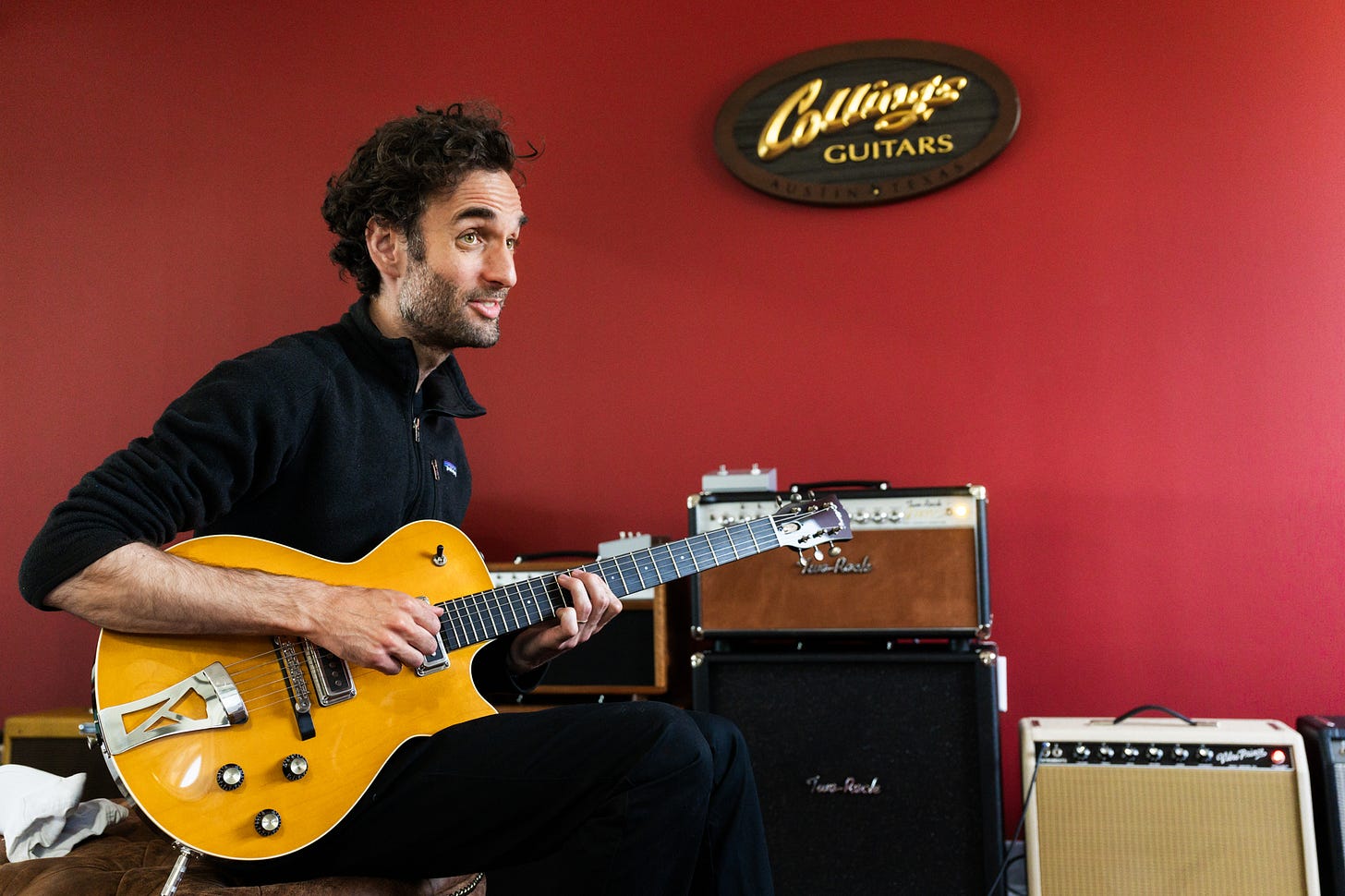Julian Lage: Chasing the Impossible, Part 2 of 2
Lage on the unaccompanied intro—how it sets a mood, reveals intent, and reshapes what it means to begin. Includes transcriptions and reflections on some of his most memorable openings.
Almost ten years ago, I showed up late to the Blue Whale in Los Angeles to catch Julian Lage with his trio and was dismayed to see the line stretching well past the entrance. By the time I made it inside, the room was packed, and Lage was already playing. He was alone with his Telecaster, threading together a few spare lines that hinted at a tune, then moving into impossible bursts of extended arpeggios and counterpoint. A few moments later, the trio joined in on the jazz standard “I’ll Be Seeing You.” The crowd barely moved. We were all caught in it.
That unaccompanied intro said so much before the song had even begun. Ever since, I’ve paid close attention to those openings—whether live or on record. They’re never perfunctory lead-ins, often taking wild and unpredictable routes, touching down on passing harmonies or rhythmic figures that don’t obviously point to what’s coming next. And yet they make total sense. These intros follow a kind of internal logic—sometimes compositional, sometimes emotional, often both. Within a minute or two, you might catch a reference to a standard, a folk tune, something Baroque, or something that only makes sense as Lage. They offer a glimpse into how he’s approaching the piece—not just technically but personally.
In the first part of our recent conversation (which you can read here), Lage reflected on his new album Speak to Me, his relationship with the guitar, and some of the key collaborations that have shaped his path. This second part is narrower in focus. It’s all about the intros.
What follows is a collection of transcriptions and thoughts drawn from different sessions and settings—Lage, in his own words.
Blue Equinox (From John Zorn’s Homenaje A Remedios Varo)
We were just reading Zorn’s charts. It was one of those occasions where he’d just say, “Okay, Julian, go play four intros.” And then he would pick one and stick it on the front. It’s funny to think of it that way, but that’s how I remember that one going. There was no real genesis for the intro—nothing composed, nothing tactical on my part.
But one thing I will say—and this is probably the least glamorous answer—is that I really have no idea what I was thinking. That’s the truth. I don’t know what’s going on.
But at the same time, there’s something about guitar—especially electric guitar—that’s inherently strong as a solo instrument. It lets you play seemingly disparate languages and somehow fold them together. And I think part of that is mechanical; the guitar, because of its timbre, can stitch together unlikely things.
It’s not quite the same on acoustic, but solo electric guitar—like in these intros—reminds me sometimes of solo Fender Rhodes performances. You don’t hear a lot of those, and I think part of the reason is that the Rhodes, like electric guitar, has a unifying sound. It’s a beautiful palette, but the tonal range stays within a certain zone. So if you want drama, you need to keep swapping in new content.
That’s where the timbral thing becomes interesting. Guitar can handle a lot of diversity—but if you want something to feel like it came out of nowhere, that can be tricky. Other instruments behave differently—you can shift character more abruptly.
I remember my teacher in college, Hal Crook, talking about intros. He was the only person I ever really heard speak about them in depth. And he said something I’ve always remembered: “You just have to know where you’re going. Not that you have to play in the style of where you’re going, but you need to have a sense of destination. You’re not playing a preview of the song—you can play anything—but it has to lead somewhere.”
That always stuck with me.
Keep reading with a 7-day free trial
Subscribe to The Eclectic Guitar to keep reading this post and get 7 days of free access to the full post archives.



